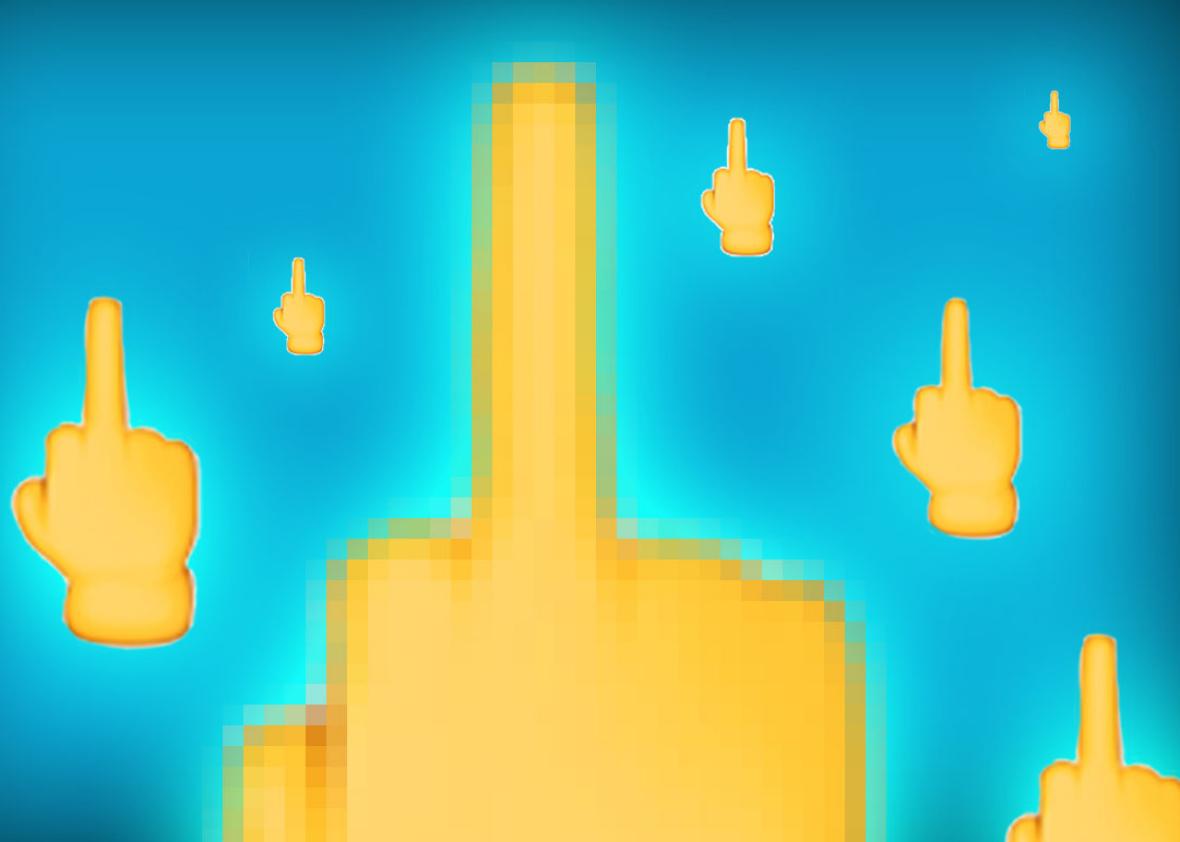When Apple releases iOS 9.1 to the public this fall, it will come with expanded emoji capabilities. “You’ll see a ton of new emoji on the keyboard including taco, unicorn, a stop hand, turkey, burrito and block of cheese,” reports the Next Web. But the soon-to-be-released emoji garnering the most excitement is the middle-finger emoji. Tech Insider describes this emoji as “hotly anticipated.” The Cut adds, “Just imagine the people who will now be on the receiving end of the middle-finger emoji in all its cartoony glory.”
I am trying to imagine these people, but I keep getting distracted by how anatomically improbable the emoji is. Apple’s version of the middle-finger emoji depicts a fully extended middle finger rising above four other fingers, all fully curled-in. The middle finger forms a 90-degree angle with the knuckles of the other digits. But this is not how fingers work, because the seemingly independent movement of any finger is partially dependent on the muscles and neurons of the other fingers, and range of motion differs from finger to finger.
Most people find it quite easy to fully extend their thumbs and index fingers while the rest of their fingers remain curled in—that’s why the thumb’s up and pointing emoji don’t strike me as unrealistic. But try independently extending your middle finger as far out as your pointer finger can go—chances are you can’t do it. (It’s even harder with your ring finger.) Obviously, there’s plenty of variation from person to person—one of my colleagues displayed a nearly vertical middle finger impressively similar to Apple’s emoji. (He did this because I asked him to, not because he hates me.) But a middle finger that can point straight up while the other fingers remain tightly clamped into a fist is the exception, not the rule.
Other operating systems’ versions of the middle finger are more realistic, as Emojipedia reveals. WhatsApp’s middle-finger emoji shows the lowermost section of each of the unextended fingers, reflecting the fact that it’s not so easy to hide those fingers away when you’re flipping someone the bird. Emoji One, the open-source emoji project, has an even better pictogram, which takes a perspective slightly above the offending digit, giving us a full view of the partially folded fingers below and a clear sense of the acute angle at which the finger is extended.
To be fair, anatomical correctness is not a fundamental feature of the emoji alphabet—after all, most people’s faces aren’t perfect yellow circles. And the middle-finger emoji is a relatively new addition to the oeuvre, having only been released as part of last summer’s update to the Unicode standard. We can only hope that, in the future, designers will come up with additional middle-finger emojis that reflect the fact that most people’s hands just aren’t that flexible. Maybe someday we’ll even get middle fingers facing in different directions. Because in a world with dozens of facial expression emojis, there should be more than one way to flip someone off from your smartphone.
*Correction, Sept. 11, 2015: Due to a production error, the caption misidentified the image accompanying this blog post as depicting the middle-finger emojis from several operating systems. The image shows only Apple’s new middle-finger emoji.
